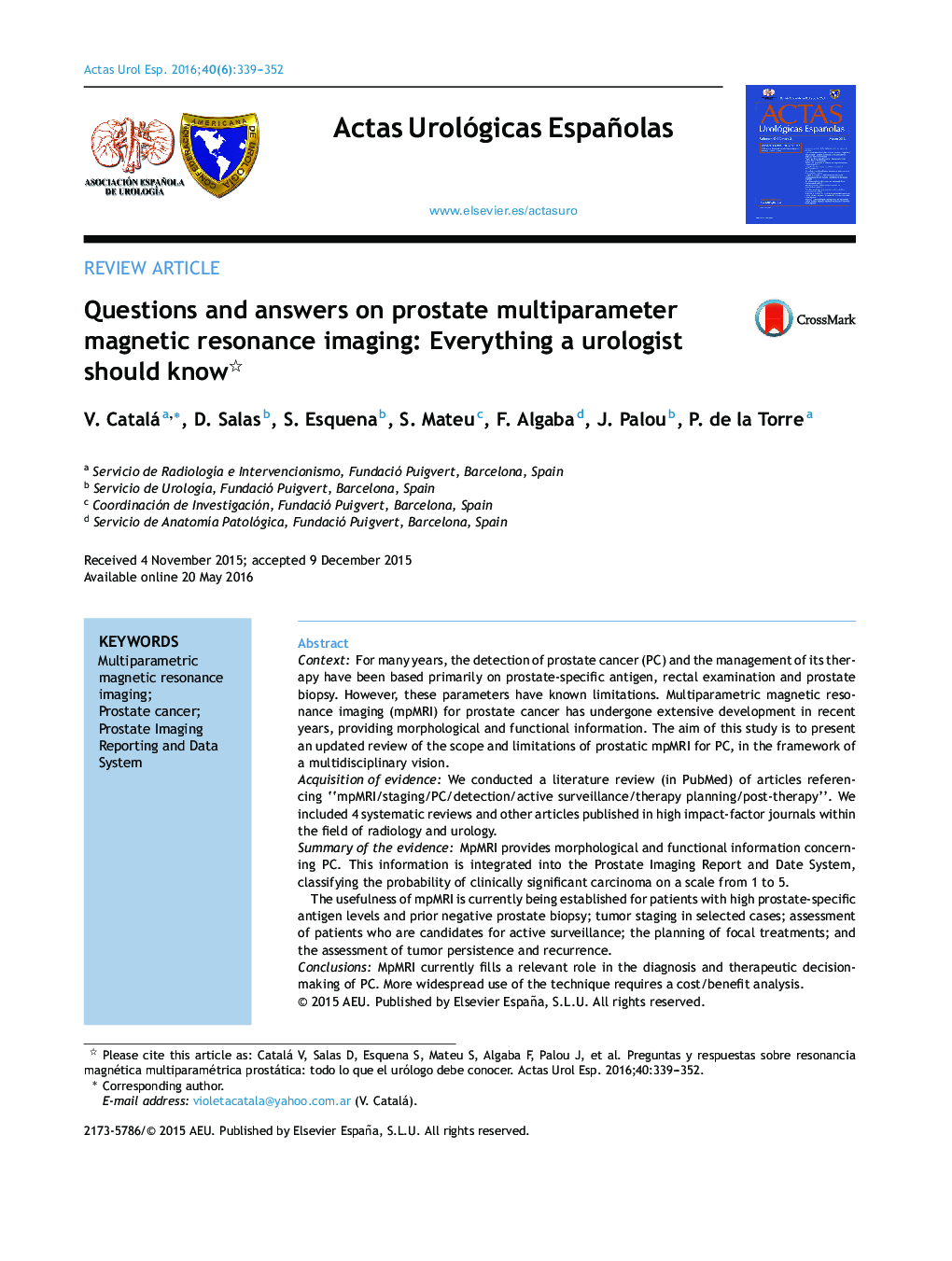| کد مقاله | کد نشریه | سال انتشار | مقاله انگلیسی | نسخه تمام متن |
|---|---|---|---|---|
| 3845202 | 1248249 | 2016 | 14 صفحه PDF | دانلود رایگان |
ContextFor many years, the detection of prostate cancer (PC) and the management of its therapy have been based primarily on prostate-specific antigen, rectal examination and prostate biopsy. However, these parameters have known limitations. Multiparametric magnetic resonance imaging (mpMRI) for prostate cancer has undergone extensive development in recent years, providing morphological and functional information. The aim of this study is to present an updated review of the scope and limitations of prostatic mpMRI for PC, in the framework of a multidisciplinary vision.Acquisition of evidenceWe conducted a literature review (in PubMed) of articles referencing “mpMRI/staging/PC/detection/active surveillance/therapy planning/post-therapy”. We included 4 systematic reviews and other articles published in high impact-factor journals within the field of radiology and urology.Summary of the evidenceMpMRI provides morphological and functional information concerning PC. This information is integrated into the Prostate Imaging Report and Date System, classifying the probability of clinically significant carcinoma on a scale from 1 to 5.The usefulness of mpMRI is currently being established for patients with high prostate-specific antigen levels and prior negative prostate biopsy; tumor staging in selected cases; assessment of patients who are candidates for active surveillance; the planning of focal treatments; and the assessment of tumor persistence and recurrence.ConclusionsMpMRI currently fills a relevant role in the diagnosis and therapeutic decision-making of PC. More widespread use of the technique requires a cost/benefit analysis.
ResumenContextoDurante muchos años, la detección del carcinoma prostático (CaP) y su manejo terapéutico se basó fundamentalmente en el antígeno prostático específico, el tacto rectal y la biopsia prostática. Sin embargo, estos parámetros poseen conocidas limitaciones. La resonancia magnética multiparamétrica (RMmp) prostática ha tenido en los últimos años un extenso desarrollo, aportando información morfológica y funcional. El objetivo es presentar una revisión actualizada de los alcances y las limitaciones de la RMmp prostática en relación con el CaP, en el marco de una visión multidisciplinaria.Adquisición de evidenciaSe realizó una revisión de la literatura en PubMed, de los artículos referidos a «RMmp/Estadificación/CaP/detección/vigilancia activa/planificación terapéutica/posterapeútica». Se incluyeron 4 revisiones sistemáticas y otros artículos publicados en revistas de alto factor de impacto dentro del área de Radiología y Urología.Síntesis de evidenciaLa RMmp aporta información morfológica y funcional respecto al CaP. Esta información está integrada en el modelo de lectura Prostate Imaging Reporting and Data System, clasificándose la probabilidad de carcinoma clínicamente significativo en una escala del 1 al 5.Actualmente está establecida la utilidad de la RMmp en pacientes con antígeno prostático específico elevado y biopsia prostática previa negativa; estadificación tumoral en casos seleccionados; evaluación en los pacientes candidatos a vigilancia activa; planificación de tratamientos focales y evaluación de la persistencia o recurrencia tumoral.ConclusionesLa RMmp actualmente cumple un papel relevante en el diagnóstico y la toma de decisiones terapéuticas del CaP. El uso aún más extendido de la técnica requerirá una valoración coste/beneficio.
Journal: Actas Urológicas Españolas (English Edition) - Volume 40, Issue 6, July–August 2016, Pages 339–352
